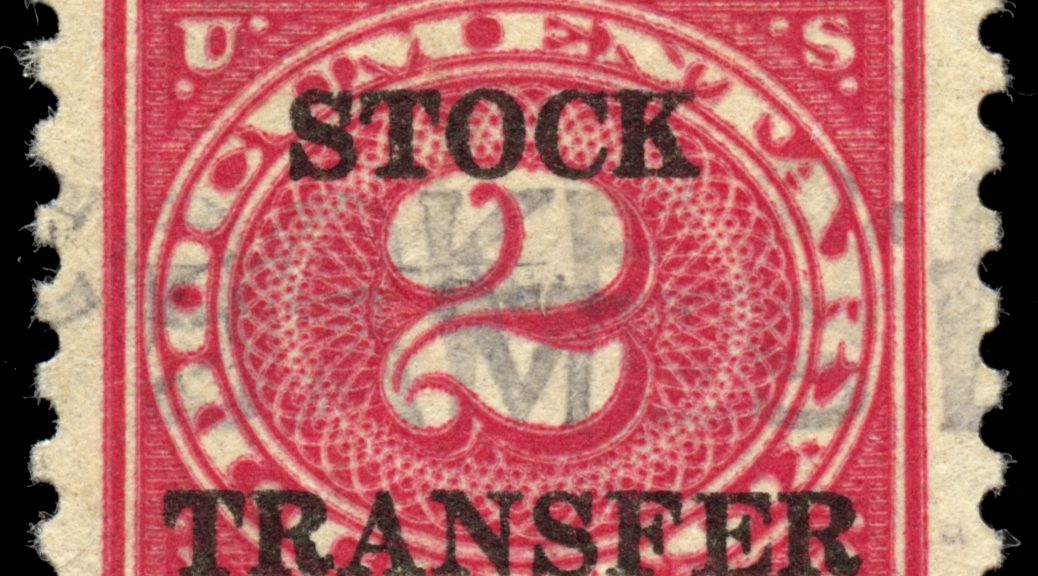
Is This The Scott Listed Rd39 Stock Transfer Double Impression?
My eyes and brain keep playing tricks on me. Depending on what/how I look at this stamp, I can see two impressions offset NE to SW with respect to one another, but if I look at other elements it just looks like ink spread.
Thoughts?
Image is 3200dpi, so you may want to open it in a new window to see it larger.
From Bart Rosenberg:
This is not the double impression, which is much more obvious. This is more of a “bounce” print, where the plate jumped slightly when the print occurred. Not uncommon.
From Ron Lesher:
I just offered a course in the APS summer seminar on the Series of 1917 documentary. The underlying stamp was initially printed by the Buffalo firm of Huebner Bleistein by offset using lithographic plates. When Congress found out they insisted that the BEP do the printing. BEP added dots inside the circles to the left and right of the word CENT (on the 1¢) and CENTS on the other cents denominations. In 1924 the BEP created high etch plates which could still be used on the offset presses. With improper adjustment of pressure, the ink could splash into the white spaces, creating what the late George Brett called splash or squeeze. Go read his articles published by the US Stamp Society circa 1991. The advantage of the high etch plates was the number of impressions they could obtain before the plate wore out.
To answer Dan Harding’s question this is not a double impression, it is George Brett’s squeeze or splash. Take a look at the 50¢ Silver Tax. Every one of them is this squeeze or splash!
Better yet, go to the APS C3a and view the three sessions of the course I just taught.
By the way this should result in a major revision of the Scott Specialized with up to three varieties of the cents denominations of the Series of 1917 and their overprints. Note that the Tobacco Sale Tax and Silver Tax are all from the underlying high etch plates, except the 25¢ denomination which to the best of my knowledge are overprinted on BEP (with dots) offset prints from lithographic plates.
